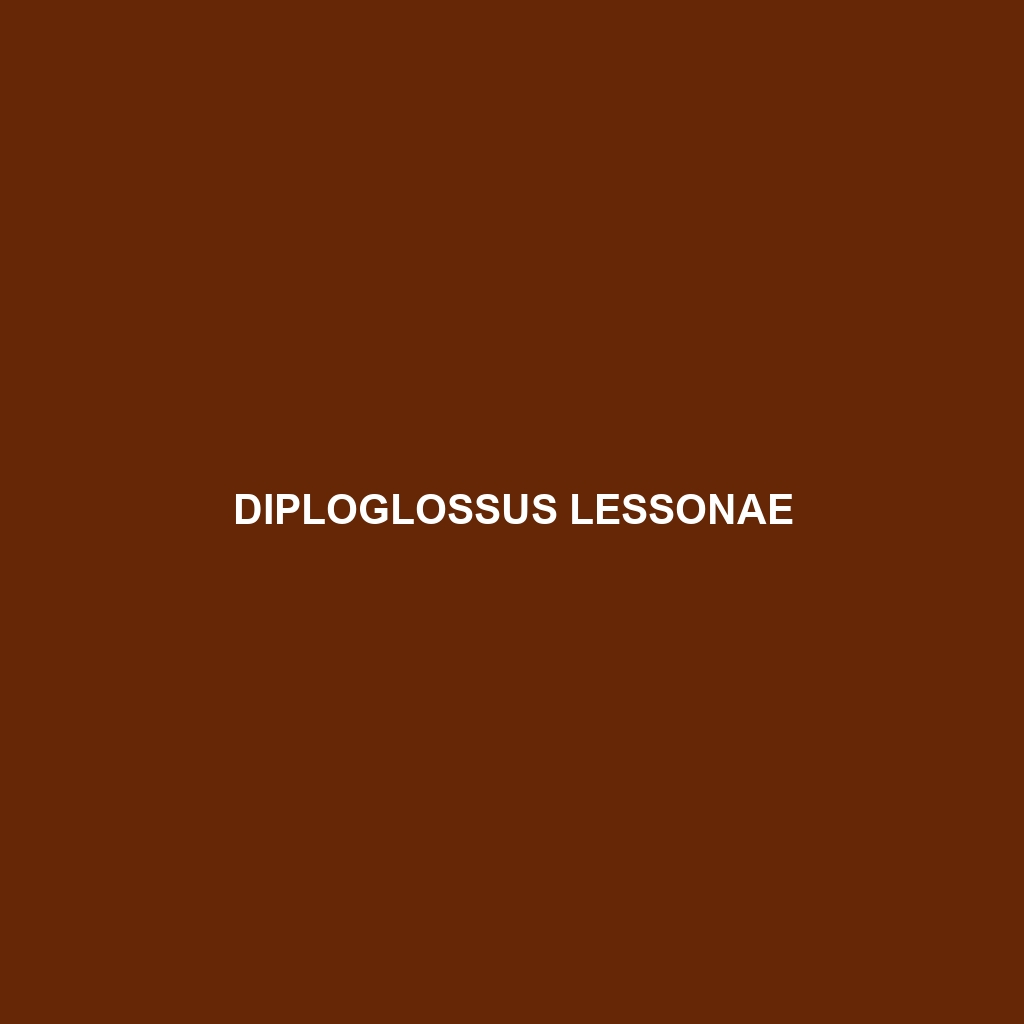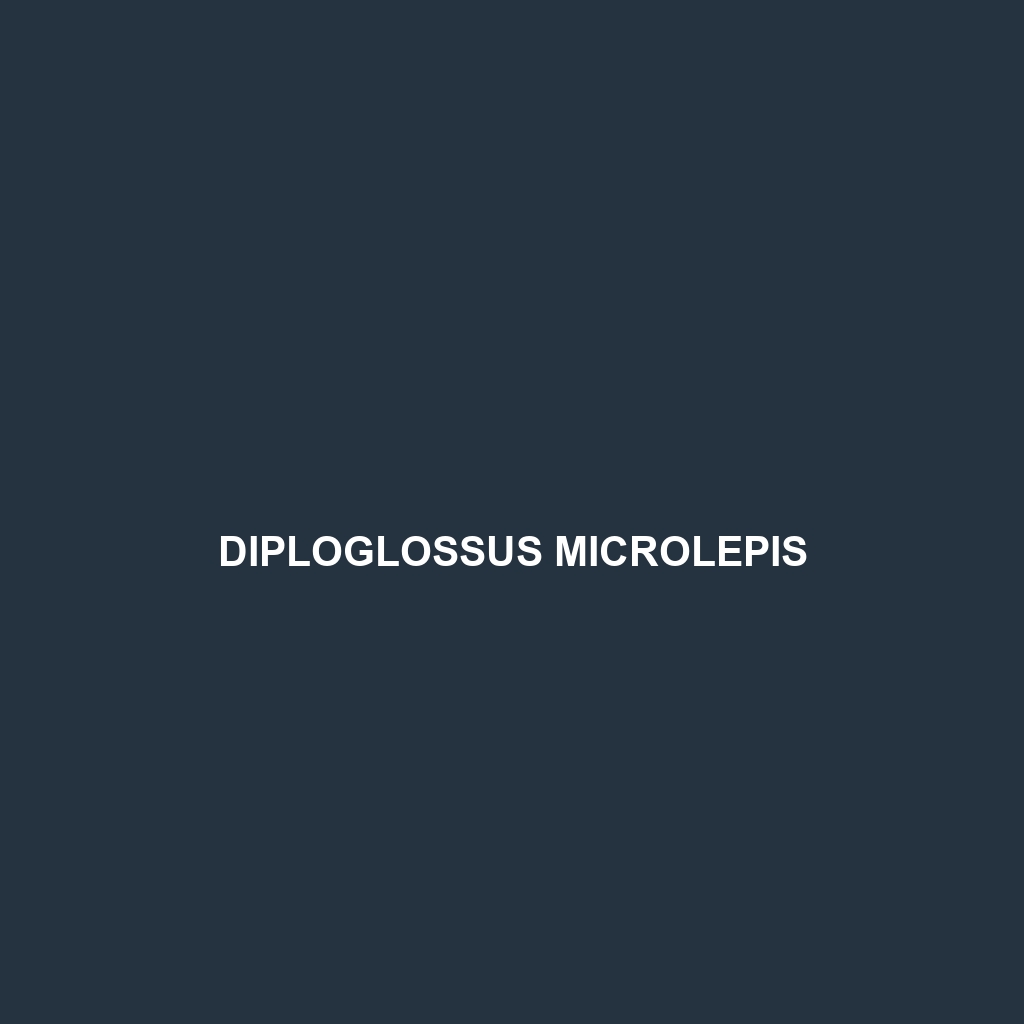
Month: October 2024
-

Diploglossus lessonae
Diploglossus lessonae, also known as “Lessona’s Diploglossus,” a medium-sized lizard native to the tropical forests and grasslands of Central America. This nocturnal species features brown or olive coloration with dark mottling, thrives in humid lowland areas, and plays a vital role in maintaining ecological balance by controlling insect populations.
-

Diploglossus garridoi
Diploglossus garridoi, a vulnerable lizard species native to the tropical forests of Central America, known for its slender body, striking coloration, and nocturnal behavior. As an insectivore, it plays a crucial role in pest control and is recognized for its ability to regenerate lost tails.
-

Diploglossus fasciatus
TheDiploglossus fasciatus, or fasciculate skink, is a slender, insectivorous lizard found in the tropical regions of Central America and the Caribbean, characterized by its striking patterns and ability to regenerate its tail. This diurnal species thrives in diverse habitats, playing a vital role in controlling insect populations while contributing to its ecosystem’s biodiversity.
-

Diploglossus delasagra
fascinating Diploglossus delasagra, a vulnerable species native to the humid tropical forests of the Caribbean, known for its robust body, nocturnal behavior, and ability to regenerate tail segments. With a diet primarily consisting of insects and a crucial role in its ecosystem, this elusive reptile is essential for maintaining ecological balance.
-

Diploderma zhaoermii
Diploderma zhaoermii, commonly found in the mountainous regions of southwestern China, is a striking lizard measuring 20 to 25 cm with an olive green to brown coloration and lateral stripes. Vulnerable due to habitat loss, it plays a vital role in its ecosystem by controlling insect populations and serving as prey for various species.
-

Diploderma yunnanense
Diploderma yunnanense, commonly known as the Yunnan Dragon, a vibrant medium-sized lizard thriving in the humid, mountainous forests of Yunnan, China. With its agile climbing abilities, striking coloration, and vital role in controlling insect populations, this species is a key player in its ecosystem, but is currently classified as Vulnerable due to habitat loss.
-

Diploderma yulongense
fascinating Diploderma yulongense, a vibrant tree lizard native to the subtropical forests of Yunnan province, China. This arboreal species, known for its color-changing ability and distinctive striped pattern, plays a crucial role in its ecosystem as both a predator and prey.
-

Diploderma yongshengense
Diploderma yongshengense, commonly known as the Yunnan Dragon Lizard, is an endangered species native to the mountainous regions of Yunnan Province, China. This diurnal insectivore, reaching lengths of 15 to 20 cm, is characterized by its rich brown to olive green coloration and climbing adaptations, playing a crucial role in its ecosystem by regulating insect…
-

Diploderma yangi
Diploderma yangi, a vibrant, medium-sized lizard found in the humid forests of Southeast Asia, recognized for its ribbed skin and insectivorous diet. Classified as vulnerable, this agile climber plays a vital role in controlling insect populations while facing threats from habitat loss and climate change.
Search
Popular Posts
-
Gerrhopilus oligolepis
Discover the Gerrhopilus oligolepis, a nocturnal insectivore native to tropical and subtropical regions, known for its slender body, distinctive dorsal spots, and remarkable camouflage. This species plays a crucial role in its ecosystem by regulating insect populations and serves as an important food source for larger predators.
-
Gerrhopilus mirus
Gerrhopilus mirus, or the remarkable snake, is a small, nocturnal insectivore primarily found in the tropical rainforests of Southeast Asia. With its distinctive brown and yellow coloration, this adaptable species plays a crucial role in controlling insect populations and maintains a vital ecological balance within its habitat.
-
Gerrhopilus mcdowelli
Common Name Gerrhopilus mcdowelli Scientific Name Gerrhopilus mcdowelli Habitat Gerrhopilus mcdowelli is primarily found in the lush, humid environments of tropical rainforests, particularly within the regions of Southeast Asia. These serpentine creatures thrive in dense foliage near streams and rivers, enjoying moist conditions that support their biological needs. Their habitat preference also extends to nearby…
Categories
Archives
Tags
animal adaptations (790) animal behavior (4790) animal reproduction (803) behavior (919) biodiversity (7114) conservation (1670) conservation efforts (1535) conservation status (4944) diet (2099) echolocation (822) ecological balance (1622) ecological role (1495) ecology (791) ecosystem (1468) ecosystem role (2695) ecosystem roles (695) endangered species (2423) environmental conservation (716) habitat (3249) habitat conservation (957) Habitat Destruction (1079) habitat loss (3048) insectivorous reptiles (740) IUCN Red List (1521) lizard reproduction (696) nocturnal animals (2708) nocturnal behavior (2315) nocturnal reptiles (681) physical characteristics (1998) reproduction (2858) reptile conservation (1001) rodent (677) rodent species (1325) seed dispersal (2078) Seed Disperser (962) small mammals (1164) snake diet (723) snake reproduction (773) South America (791) species description (714) tropical forests (938) Vulnerable Species (4534) wildlife (2507) wildlife conservation (4699) wildlife protection (881)




